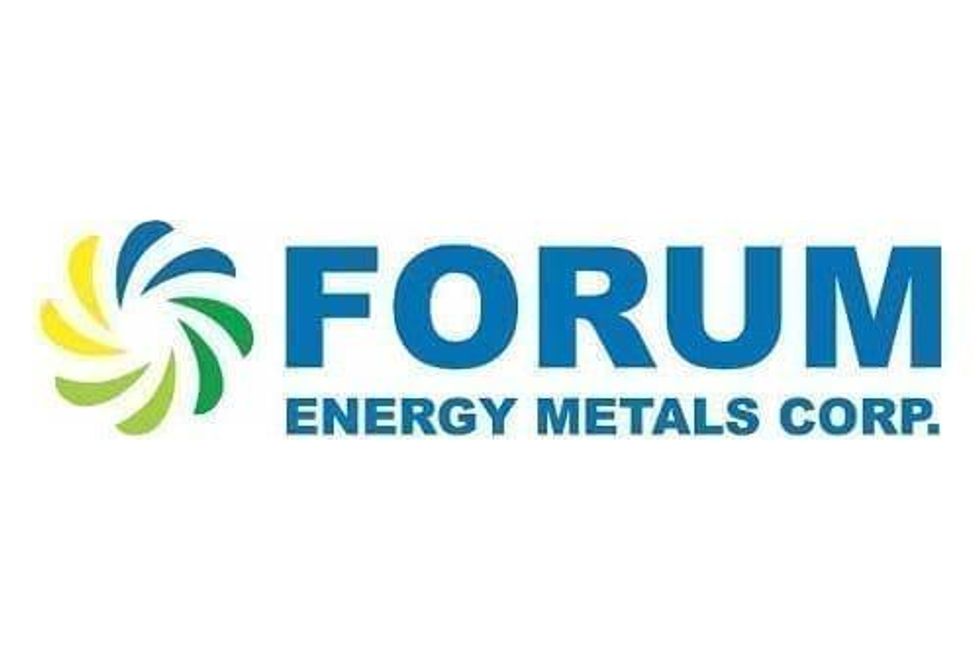- AustraliaNorth AmericaWorld
Investing News NetworkYour trusted source for investing success
- Lithium Outlook
- Oil and Gas Outlook
- Gold Outlook Report
- Uranium Outlook
- Rare Earths Outlook
- All Outlook Reports
- Top Generative AI Stocks
- Top EV Stocks
- Biggest AI Companies
- Biggest Blockchain Stocks
- Biggest Cryptocurrency-mining Stocks
- Biggest Cybersecurity Companies
- Biggest Robotics Companies
- Biggest Social Media Companies
- Biggest Technology ETFs
- Artificial Intellgience ETFs
- Robotics ETFs
- Canadian Cryptocurrency ETFs
- Artificial Intelligence Outlook
- EV Outlook
- Cleantech Outlook
- Crypto Outlook
- Tech Outlook
- All Market Outlook Reports
- Cannabis Weekly Round-Up
- Top Alzheimer's Treatment Stocks
- Top Biotech Stocks
- Top Plant-based Food Stocks
- Biggest Cannabis Stocks
- Biggest Pharma Stocks
- Longevity Stocks to Watch
- Psychedelics Stocks to Watch
- Top Cobalt Stocks
- Small Biotech ETFs to Watch
- Top Life Science ETFs
- Biggest Pharmaceutical ETFs
- Life Science Outlook
- Biotech Outlook
- Cannabis Outlook
- Pharma Outlook
- Psychedelics Outlook
- All Market Outlook Reports
Uranium prices are still on the upswing, leaving behind a bullish feeling in the market.
Accounting for uranium’s recent price rise are supply-side issues stemming from the fact that lower prices are forcing companies to shut down.
As UBS commodities analyst Daniel Morgan told The Sydney Morning Herald, “[t]here’s been a few supply-side issues which has been enough for a very modest price rise. What the market really needs is a demand-side driver to get the price going and in my view we don’t have one at the moment.”
Nevertheless, shutdowns — like those at Cameco’s (TSX:CCO,NYSE:CCJ) McArthur River and Key Lake operations — will mean a tightening of uranium supply across the board, and that has the uranium market taking its most bullish outlook since the Fukushima nuclear disaster in Japan three years ago.
As Morgan Stanley analyst Joel Crane noted late last week, “[t]he reduction in sport supplies has led to increasingly competitive offers and bids in the market place, driving prices higher.” Crane also pointed to increased signs of restarts coming from Japan, which is good for the market; however, the likelihood of high inventory levels held by utilities will likely weigh on sentiment.
Australia and India
Alongside the budding uranium price, Australian Prime Minister Tony Abbott has arrived in India to sign a nuclear cooperation agreement that will bring the Southeast Asian country out of nuclear isolation and increase its uranium supply options.
India sources over half of its electricity from coal-fired plants and suffers from crippling power shortages. In light of that situation, the country has been trying to develop civilian nuclear energy as an alternative. With 20 reactors and a capacity of 4,780 megawatts — but only nine reactors operating at capacity — the country is in need of a secure supply of nuclear fuel.
However, as The New York Times reported, “[s]ecuring enough fuel has been a sticking point because of the [nonproliferation] treaty.”
Looking beyond the issue of the treaty, Abbott appears unfazed. “We ought to be prepared to provide uranium to India under suitable safeguards,” he said, adding that “India is a fully functioning democracy with the rule of law, and I think we should be prepared to support India, and that’s what my upcoming visit will be all about.”
Furthermore, Abbott noted that “India has a strong nuclear energy program, Australia has very large reserves on uranium. I do want Australia to be an energy superpower in the years ahead. We have large reserves of uranium. We have massive reserves of coal. We have extensive reserves of gas. We are the world’s second largest thermal coal exporter.”
Company news
While two of Cameco’s operations remain shut down for the time being, Uranerz (TSX:URZ,NYSEMKT:URZ) shipped its first yellowcake from the Nichols Ranch ISR uranium mine in Wyoming this week. The delivery of the company’s first 36,000 pounds of drummed uranium concentrate is a major milestone for the new producer, which is making progress towards its first sales.
Haywood Securities analyst Colin Healey is bullish about the news. He said in a research note that the “news of first delivery of drummed yellowcake product to ConverDyn’s facilities confirms the functionality of Uranerz’s logistics chain and capability to generate saleable uranium concentrate from its new mine, processing facilities and partners.”
Healey also expects the company to continue to ship loaded resin to the Smith Ranch facility and deliver final product to intermediaries throughout the rest of 2014.
Azincourt Uranium (TSXV:AAZ) was also in the news this week. Today the company announced that it has come to an agreement with Macusani Yellowcake (TSXV:YEL) for all Azincourt’s adjacent uranium properties on the Macusani Plateau in Peru. Per the agreement, Macusani will acquire 100 percent of Minergia, Azincourt’s subsidiary, for the issuance of 68,350,000 common shares of Macusani; that’s an approximate 29 percent of the outstanding shares post transaction. Azincourt’s CEO, Ted O’Connor, will be appointed CEO of Macusani following the completion of the acquisition.
Yesterday, the Athabasca junior also announced the completion of its drill program at the Patterson Lake North (PLN) property in Saskatchewan. As part of the news, the company reported on the discovery of the first significant anomalous radioactive mineralization at PLN.
According to the company, “PLN14-019, which tested the prospective A1 electromagnetic (EM) conductor, has intersected two narrow intervals of anomalous and variable radioactivity with a maximum peak measured at 1450 cps over 0.5m occurring within a strongly clay altered graphitic pelitic gneiss. All three other holes (PLN14-016, 017, 018) intersected anomalous hydrothermal clay altered intervals, associated with structurally disturbed sections. ”
Securities Disclosure: I, Vivien Diniz, hold no investment interest in any of the companies mentioned.
Outlook Reports
Featured Energy Investing Stocks
Browse Companies
MARKETS
COMMODITIES
| Commodities | |||
|---|---|---|---|
| Gold | 2390.86 | +0.85 | |
| Silver | 28.67 | +0.01 | |
| Copper | 4.52 | +0.05 | |
| Oil | 83.24 | +0.51 | |
| Heating Oil | 2.55 | +0.01 | |
| Natural Gas | 1.76 | 0.00 | |
Investing News Network websites or approved third-party tools use cookies. Please refer to the cookie policy for collected data, privacy and GDPR compliance. By continuing to browse the site, you agree to our use of cookies.






